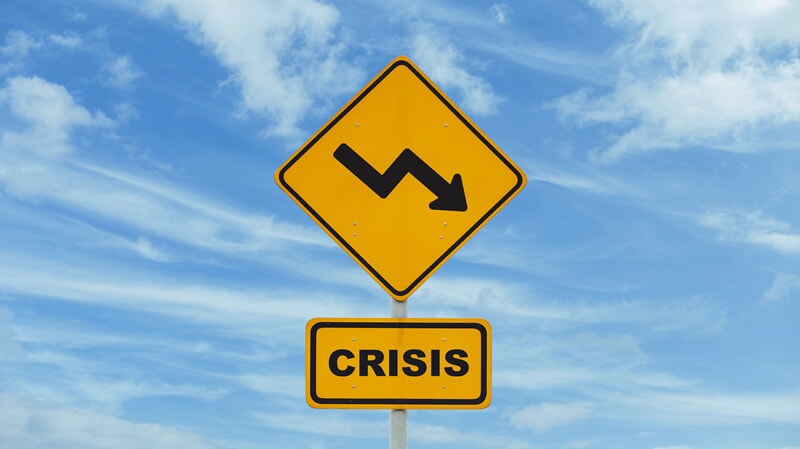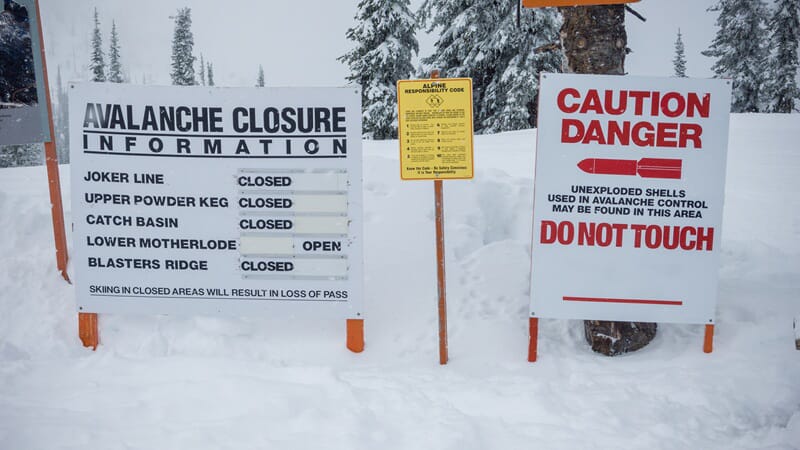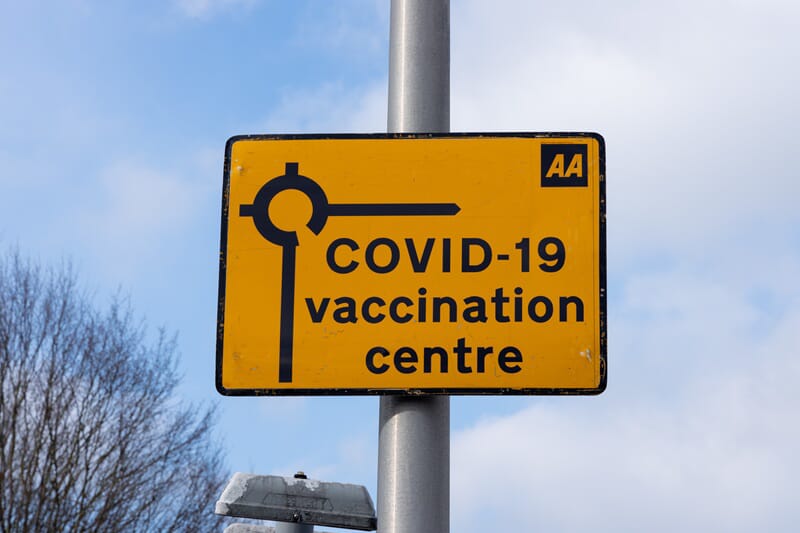
When crisis strikes, clear communication can mean the difference between containment and catastrophe. While digital channels dominate modern business communication, physical signage often becomes the most reliable and immediate way to reach those you need to communicate with urgently during emergencies.
From supply chain disruptions to cyber-attacks, the organisations that weather crises most successfully are those that have prepared comprehensive signage strategies before these have to be called on.
The need to communicate is immediate when an emergency breaks out, with many different audiences having to be reached with information specific to their situation. Physical signage provides a critical backup when digital systems fail and offers reassurance through visible, tangible communication that digital messaging cannot match.
Understanding Crisis Categories and Signage Needs
Different types of crises demand different signage approaches, each with unique timing, audience and messaging requirements. At FASTSIGNS Manchester we can help you identify what approaches fit best with your business by understanding the likely crises you may face and tailoring bespoke signage solutions to these. Such potential crises include:
- Operational Crises such as supply chain disruptions, equipment failures or service outages that require signage to manage expectations while maintaining customer confidence. These situations often develop gradually, allowing for planned messaging deployment.
- Security Crises including cyber-attacks, data breaches or physical security threats need immediate, authoritative messaging that prioritises safety while maintaining operational continuity where possible.
- Natural Disasters and External Events such as severe weather, transport disruptions, or utility failures require flexible signage systems that can operate independently of normal infrastructure.

- Reputation Crises stemming from negative publicity, social media campaigns or regulatory issues need carefully crafted signage that acknowledges concerns while reinforcing your core brand values.
Each crisis type requires pre-planned signage templates and deployment procedures to ensure consistent, appropriate messaging when decision-making capacity may be compromised.
Rapid Deployment Solutions
The effectiveness of crisis signage depends heavily on deployment speed. Traditional signage production timelines of days or weeks become irrelevant when communication needs are measured in hours or minutes.
Digital Display Networks offer the fastest deployment option for organisations with existing infrastructure. Content can be updated remotely within minutes, allowing for real-time messaging adjustments as situations evolve. However, these systems require power and network connectivity, which may be unreliable during certain crisis types.
Pre-fabricated Template Systems provide physical backup options that can be deployed without digital infrastructure. These modular systems use pre-approved messaging templates with spaces for situation-specific information, allowing rapid customisation while maintaining brand consistency and legal compliance.
Vinyl Banner Systems offer cost-effective rapid deployment for temporary messaging needs. Modern printing technology allows high-quality banners to be produced within hours, making them suitable for medium-term crisis communication needs.
Magnetic and Adhesive Solutions enable immediate messaging updates on existing signage infrastructure. These systems work particularly well for smaller businesses that need flexibility without major infrastructure investment.
Message Hierarchy During Crisis
Effective crisis signage follows a clear information hierarchy that prioritises immediate needs while providing comprehensive information for different audiences.
Primary Level: Safety and Immediate Actions must be communicated first and most prominently. This includes evacuation procedures, safety precautions, emergency contact information and immediate operational changes affecting stakeholder safety.
Secondary Level: Operational Information covers service disruptions, alternative procedures, expected timelines and impact on normal operations. This information helps stakeholders understand the practical implications of the crisis.
Tertiary Level: Context and Reassurance provides background information, explains response measures, demonstrates organisational competence and maintains confidence in long-term stability.
The physical hierarchy should be reflected in signage design through size, positioning, colour coding and visual emphasis, ensuring critical information is absorbed even under stress.
Multi-Channel Integration
Crisis signage is most effective when integrated with other communication channels rather than operating in isolation. Physical signs should complement and reinforce messages delivered through digital channels, creating a cohesive communication strategy.
Consistency Across Channels ensures that stakeholders receive the same core messages regardless of how they access information. This consistency builds credibility and reduces confusion during already stressful situations.
Cross-Platform References can direct stakeholders from physical signage to digital resources for detailed information, while digital channels can reference physical information points for immediate assistance.
Redundancy Planning recognises that different stakeholders may have access to different communication channels during a crisis. Physical signage provides reliable backup when digital systems fail or when stakeholders lack digital access.
Stakeholder-Specific Messaging
Crisis situations often require simultaneous communication with multiple audiences, each with different information needs and concerns.
Employee Communications through internal signage should provide detailed operational information, clear instructions and reassurance about job security and organisational stability. These messages can be more detailed and technical than public-facing communications.
Customer Communications must balance transparency with confidence-building, providing necessary information about service impacts while demonstrating control and competence. These messages often require careful legal review to avoid liability implications.
Supplier and Partner Communications should address operational impacts, revised procedures, and timeline expectations. B2B relationships often require more detailed technical information than consumer communications.
Regulatory and Compliance Communications may be legally mandated for certain crisis types, requiring specific language, positioning and timing. These requirements should be built into crisis signage templates.
Legal and Compliance Considerations
Crisis signage often operates under different legal requirements than normal business communications. Understanding these obligations is crucial for avoiding additional complications during already challenging periods.
Regulatory Notification Requirements vary by industry and crisis type. Financial services, healthcare, food production and other regulated industries may have specific signage obligations during different types of emergencies.
Health and Safety Obligations require certain information to be displayed prominently during specific crisis types. These requirements often override normal design considerations, requiring functional rather than aesthetic approaches.

Accessibility Compliance becomes even more critical during crises when stakeholders may be operating under stress or in unfamiliar circumstances. Crisis signage must meet or exceed normal accessibility standards.
Documentation and Evidence considerations recognise that crisis signage may become evidence in subsequent investigations or legal proceedings. Maintaining records of what was displayed, when and why can be crucial for defending organisational response decisions.
Brand Consistency Under Pressure
Maintaining brand identity during crisis communication presents unique challenges. Stakeholders expect competent, professional communication, but traditional brand guidelines may seem inappropriate during serious emergencies.
Adapted Brand Guidelines for crisis communications should be developed in advance, defining how brand elements adapt for emergency use while maintaining recognition and professionalism.
Tone and Voice Adjustments allow your business to communicate with appropriate gravity while maintaining your distinctive communication style. The goal is recognition and trust rather than normal brand personality projection.
Visual Identity Modifications may include simplified logos, adjusted colour schemes for maximum visibility, and modified typography for clarity under stress conditions.
Recovery Phase Signage
Crisis communication doesn't end when immediate danger passes. The transition from crisis to recovery requires carefully managed messaging that rebuilds confidence while acknowledging lessons learned.
Gradual Transition Messaging moves stakeholders from emergency awareness to normal operations without creating confusion about current status or future reliability
Improvement Communications demonstrate how the organisation has strengthened operations, implemented additional safeguards, or improved crisis response capabilities based on the experience.
Appreciation and Recognition messaging acknowledges stakeholder patience, highlights employee dedication and reinforces community relationships that may have been strained during the crisis.
Investment and Preparation
The most effective crisis signage systems are those planned and partially implemented before they're needed. This preparation requires some investment and organisational commitment to crisis communication planning, making it all the more important to talk to us at FASTSIGNS Manchester sooner rather than later.
Successful organisations treat crisis signage as essential infrastructure rather than an emergency expense, developing systems that serve dual purposes during normal operations while providing enhanced capability during emergencies.
The organisations that emerge strongest from crisis situations are often those whose communication strategies demonstrate competence, transparency and genuine concern for stakeholder welfare. Physical signage, properly planned and deployed, plays a crucial role in projecting these qualities when they matter most.